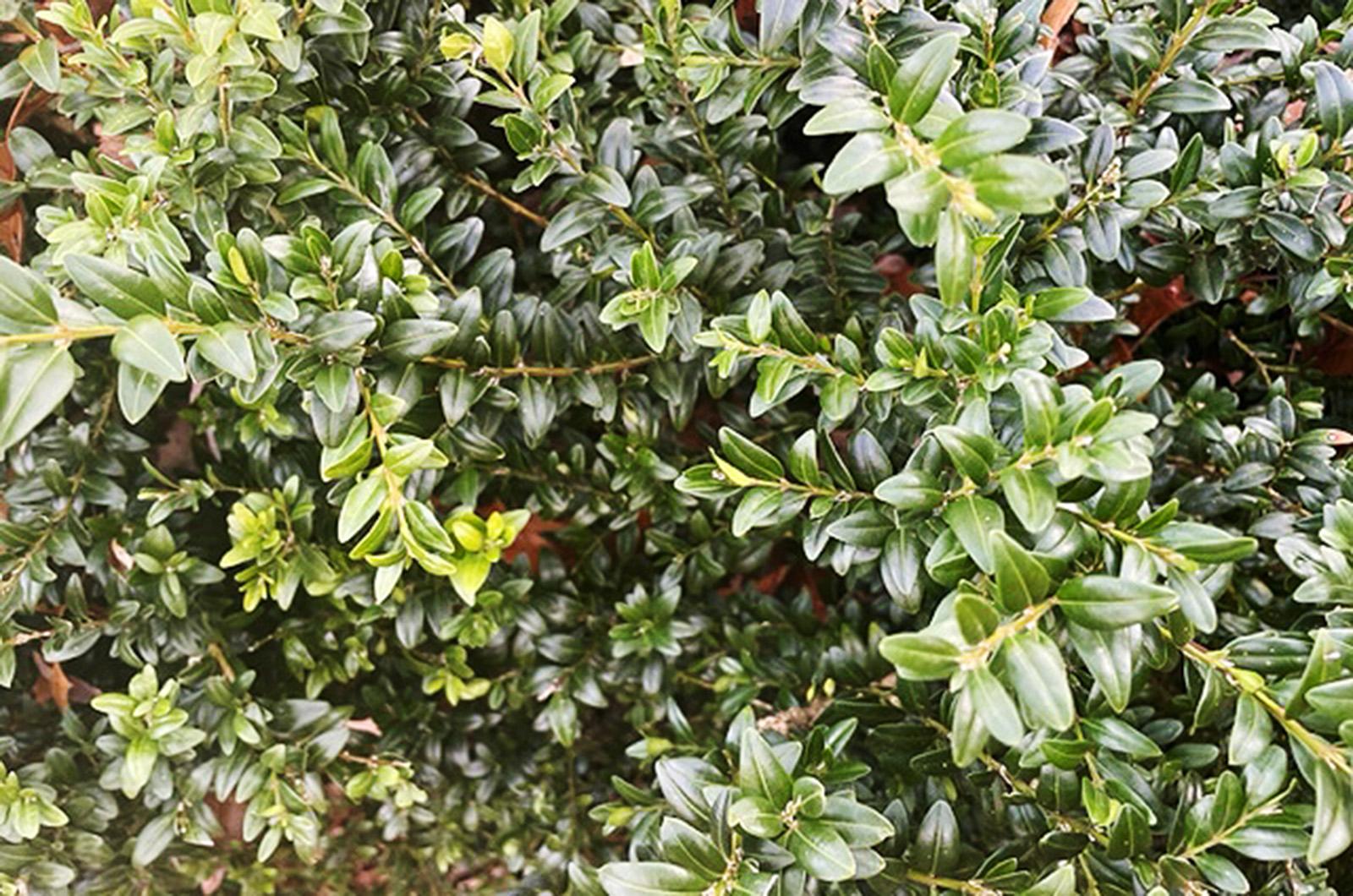There was no beating around the bush: boxwood was the favorite.
We didn’t need to hedge our bets on the most popular material for wreathmaking at Felix Neck’s Fall Festival last weekend. Boxwood was, hands down, the winner — and there were lots of hands in the pile of these hedge-trimmed greens.
Also called the box tree, boxwood has been a historically and culturally-notable plant that continues to be favored by many and unpopular with few.
Boxwood has been documented since ancient times and is widely considered the oldest garden ornamental used by humans. Romans, Greeks and Egyptians found value for this plant, with the first example of trimming it into formal hedgerows and topiaries in gardens.
Artisans also crafted boxes from the wood to hold valuables, making it the source for the original jewelry boxes. The wood is appreciated for its fine woodworking potential. The timber is a heavy wood, and is twice the hardness of oak. It is closely grained and generally doesn’t warp or split, so it was also used to make writing tablets, combs and carved ornaments. Chaucer once referred to “the boxtree piper,” an allusion to the commonness of boxwood instruments, and Shakespeare referred to the plant in Twelfth Night as a good place for his characters to hide and eavesdrop on their enemy.
Originally known as the “rich man’s hedge,” this plant was associated with wealth and privilege for centuries. However, it eventually spread widely and is now found worldwide in both fancy gardens and commonplace yards.
Boxwood hails from everywhere except North America and how it came to this country is disputed. Some say it arrived with “emigrating gentry” from their castles in Britain. Other reports insist boxwood came from Holland to New York in the mid-1650s to the Long Island gardens of Shelter Island’s first European settlers, Grissell Brinley Sylvester and her husband Nathaniel. Now, as we know, it is ubiquitous across the country.
The plant’s popularity also arose because of its symbolism and uses beyond well-manicured figures and privacy hedges. Boxwood twigs represent immortality and were placed in coffins and planted at gravesites. Garden plans inscribed in Egyptian tombs included this favorite flora. Christians reportedly have used it in place of palm fronds on Palm Sunday.
Of course, there were also traditional medicinal and household uses of boxwood. Extracts, oils and perfumes could be produced, though the latter is curious since this plant is known for its unpleasant odor. Herbalist John Gerhard described the scent as “evil and loathsome,” and Queen Anne ordered boxwood hedges removed since she also considered its aroma offensive. Oliver Wendell Holmes held a contrary view, proclaiming that “box has the flavor of eternity.”
On the plus side, a powder made from its leaves was employed for hair growth and, when boiled in lye, an auburn hair dye could be produced. Medicinally, this plant is used as a narcotic, sedative, diaphoretic to induce sweating and for a variety of conditions including toothaches, flu, epilepsy, rheumatism and syphilis.
Don’t run out to make your own medicine. In a curious contradiction, boxwood contains a toxin called buxine that is bitter to animals and can cause nausea, nervous system concerns, vertigo, coma and even death.
So much for out-of-the-box thinking when it comes to a plant that has stood the test of time, moved across continents, had its moment in the sun and still remains one of the most popular plants across the world.
Suzan Bellincampi is Islands director for Felix Neck Wildlife Sanctuary in Edgartown and the Nantucket Wildlife Sanctuaries. She is also the author of Martha’s Vineyard: A Field Guide to Island Nature and The Nature of Martha’s Vineyard.




Comments
Comment policy »